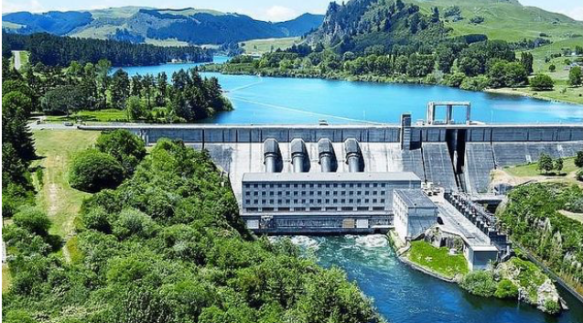Electricity generation is one of the seven Drawdown sectors. The solutions in this sector have potential to drawdown 246.12 gigatonnes of CO2 equivalents over 30 years. There are twenty solutions. Those most relevant to Northland are microgrids #78, rooftop solar #10 and geothermal #18. It can be argued that several of the others are relevant too, including onshore wind turbines #2 and methane digesters #s 30 and 64.
The power sector currently accounts for around 40 percent of annual greenhouse gas emissions to the atmosphere, making it the highest-emitting sector, followed by industry and transportation. Of total worldwide electricity generation, fossil fuels represent 67 percent, nuclear 11 percent, and renewable energy sources just over 24 percent and growing, with the bulk (18 percent) being from large hydropower systems. In the last few years, the competitiveness of renewable sources for electricity generation has continued to increase due to the price evolution and the efficiency improvements of these technologies (Drawdown).
Electricity in New Zealand
In 2016 we generated 85% of our electricity from renewables. This can attributed to our small population and abundant natural resources. This gives us less scope to reduce carbon emissions as we only have about 20% non-renewables to replace.

Whakamaru power station on the Waikato River (Radio NZ).
In addition to reducing emissions, redesigning our electricity system is important to provide New Zealanders with cheaper renewable energy. This involves rethinking how we increase renewables, how we get electricity to consumers and reforming the policy framework that governs the system.
The current policy framework was developed for a model of centralised transmission of electricity from big generators. It requires an expensive and high capacity national network. This document outlines many policy changes from the mid 1980s, including the Electricity Industry Reform Act 1998, that “required full ownership separation of distribution (lines) businesses from supply (retail and generation) businesses”. The intention was to encourage competition and cross-subsidisation, but has this and subsequent reforms kept prices down for consumers?
This graph from Analysis of historical electricity industry costs shows price trends from 1974 to 2013 (in $2013). Notice how prices were relatively stable up until the 1998 Act, but prices increased on the back of the new legislation.

It gets worse for Northland. Differential pricing for transmission, will make power more expensive for Northlanders as we are farthest from the South Island generators. For example Genesis will raise its price by $100 a year for Top Energy customers and $83 for Whangarei and Kaipara customers.
Regional autonomy and the energy Internet
Here’s Jeremy Rifkin explaining the energy Internet. He works with the European Union to design an energy Internet that will span Europe.
Drawdown describes microgrids #78, an important component of the energy Internet.
A microgrid is a localized grouping of distributed energy sources, like solar, wind, in-stream hydro, and biomass, together with energy storage or backup generation and load management tools. This system can operate as a stand-alone entity or its users can plug into the larger grid as needed. Microgrids are nimble, efficient microcosms of the big grid, designed for smaller, diverse energy sources. The use of local supply to serve local demand makes them more resilient and reduces energy lost in transmission and distribution.
Alongside microgrids, grid flexibility #77 is provided by a combination of technologies.
- Constant renewables, such as geothermal;
- Utility-scale storage, such as pumped hydro and molten salt;
- Small-scale storage, such as batteries; and
- Demand-response tools, such as smart thermostats and smart appliances, to mediate peaks in demand.
To enable microgrids and other network innovations, the policy framework will ideally support the local power companies, Northpower and Top Energy to be more involved in retail, distribution and generation. These are community owned companies and more likely to work in their customers’ interest.
Regional generation
Costs of renewable energy generation continues to fall.
Northland has abundant wind and sun, a huge coastline relative to land area and geothermal resources. Top energy operate a 25MW geothermal power station at Ngawha. At this capacity it supplies 70% of the Far North’s power with two further 25MW stations planned. The Kaipara harbour has the longest harbour shoreline in the world. The Crest Energy project didn’t achieve stakeholder support, but the Kaipara remains a strong prospect for tidal flow generation if stakeholders can be effectively engaged.
Questions
- As a region, how do we secure greater regional autonomy over our energy generation, distribution and supply?
- Is our future independent consumers with the majority purchasing battery storage, or do we optimise the energy Internet and support our local electricity companies?
- How can we ensure the sustainability of locally owned electricity companies?
- What are the best options for renewable generation in Northland?
